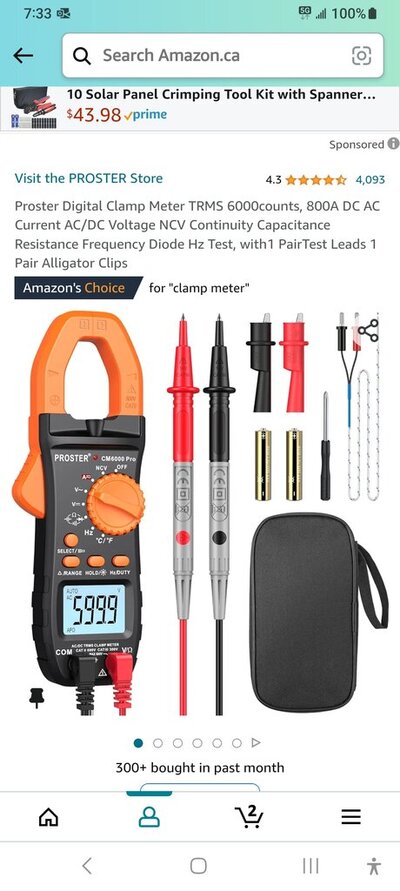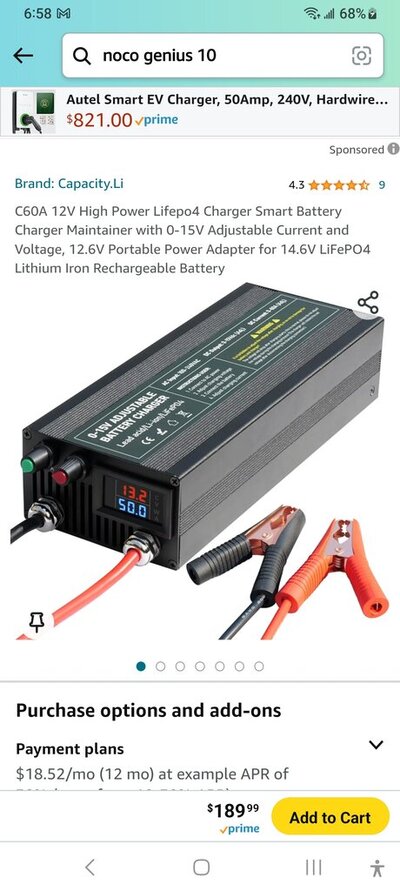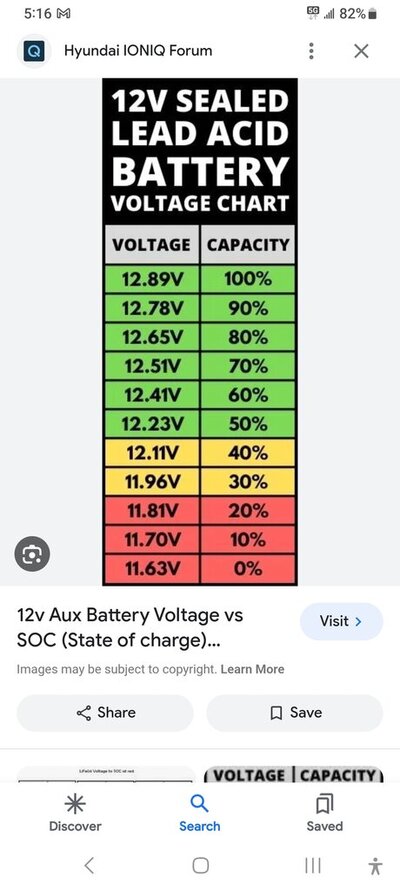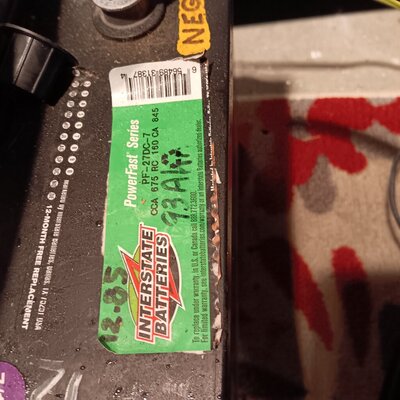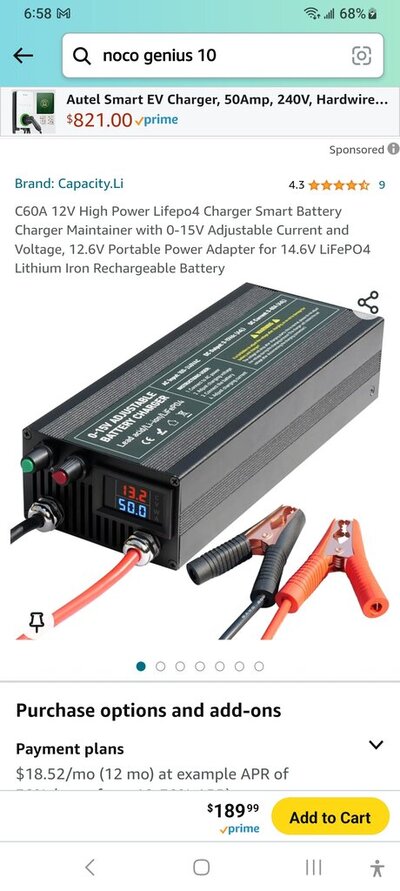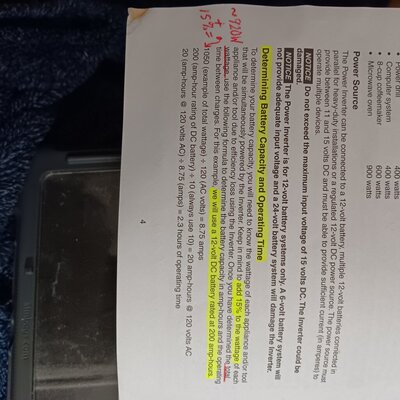Pass me
Well-known member
Agreed. It's important to me to know what shape my battery(s) are in, (good, fair, poor) compared to the original specs. That's now around the corner so to speak.
Having said that all I really wanna know is how much wattage is available? Establishing a standard capacity run will give me that. This then will help to determine the SOC % before my generator is req'd.
It's an old battery so I'm thinking 50% depletion but my next "quest" will be to determine the minimum generator run time to restore a practical SOC for my needs. I understand ~80% full is achieved quickly and after that it ain't "worth the gas" to comtinue.
The old girl was equalized for 12 hrs @ 13.8V/.5A, has rested for 14 hrs now & is showing 13.4V. The capacity run will be with my Bose Wave radio (50W) as it's more fun to use than a light. I will post the results.
This all started with a question and I'm indebted to all for being so helpful but.......another question pls.
Quote
"measuring with an ammeter will get you the closest."
I have never owned one, it just tells me the Amps flowing through the wire? Is it best to get the alligator style? I've considered the attached before, ~$50 Canadian ($1000 US, lol).
Having said that all I really wanna know is how much wattage is available? Establishing a standard capacity run will give me that. This then will help to determine the SOC % before my generator is req'd.
It's an old battery so I'm thinking 50% depletion but my next "quest" will be to determine the minimum generator run time to restore a practical SOC for my needs. I understand ~80% full is achieved quickly and after that it ain't "worth the gas" to comtinue.
The old girl was equalized for 12 hrs @ 13.8V/.5A, has rested for 14 hrs now & is showing 13.4V. The capacity run will be with my Bose Wave radio (50W) as it's more fun to use than a light. I will post the results.
This all started with a question and I'm indebted to all for being so helpful but.......another question pls.
Quote
"measuring with an ammeter will get you the closest."
I have never owned one, it just tells me the Amps flowing through the wire? Is it best to get the alligator style? I've considered the attached before, ~$50 Canadian ($1000 US, lol).

